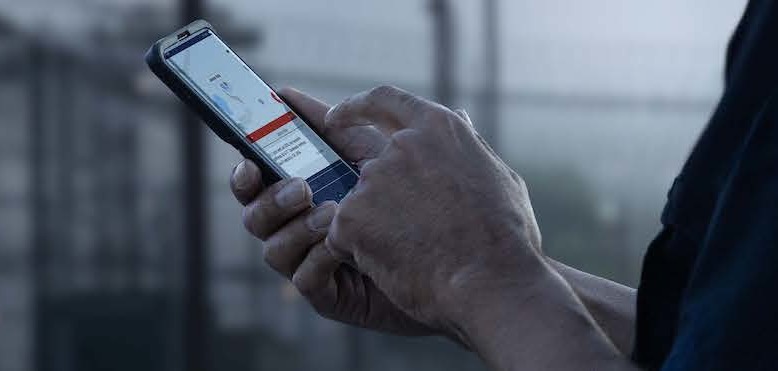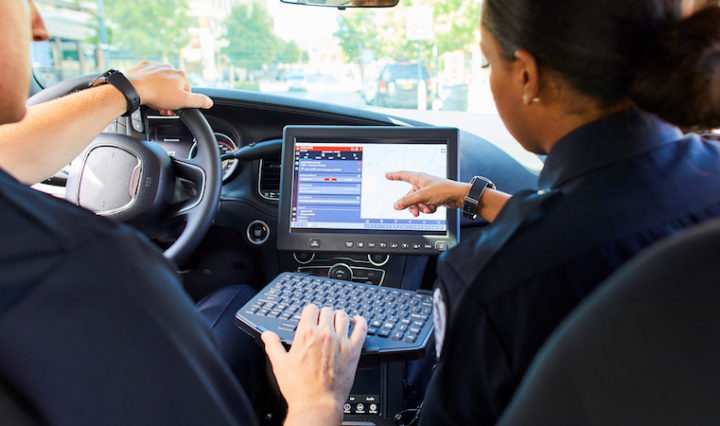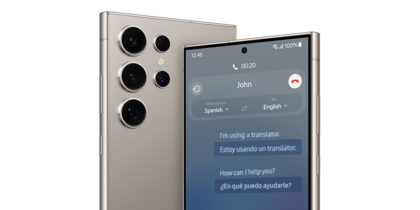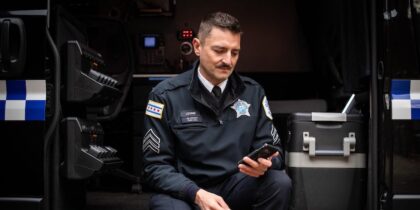For public safety officers, there’s safety in numbers — even when they’re all alone. A police officer confronting an armed criminal, a parole officer checking on a dangerous parolee, a prison guard doing solo rounds — the best way to keep these public servants safe is for their teams to know their exact location and for everyone to have a direct line of communication.
Computer-aided dispatch (CAD) systems and police radios help with that but in some emergency situations, legacy technology might not be enough. That’s why DMI, a global digital transformation leader, has developed a mobile solution that enhances these tools, providing real-time location data.
“DMI’s EndZone platform for police officers extends the capabilities of many current technology solutions,” says Chris Tengwall, DMI’s executive vice president of platform solutions. “Police departments won’t be getting rid of their radios. Rather, EndZone extends the radio, and officers can use their phones to communicate on official radio channels. We can also tap into CAD databases and push out that same information to an officer’s screen rather than forcing them to log in through a cumbersome browser process. Normally, CAD would provide the starting locations of officers and equipment but not ongoing location information. With our solution, the officers’ devices push the location information of each officer, providing real-time situational awareness to the incident commander .”
EndZone isn’t just for first responders. It can also extend the capabilities of corrections technology. How does it work, and what are the benefits?
How EndZone Works for Police Officers
DMI’s EndZone app pulls data from a variety of sources, including CAD systems and officer smartphones. This information is layered onto a live map to enhance situational awareness. Officers can edit the map in real time and share that awareness with one another or with other emergency workers. Meanwhile, commanding officers can view officers’ locations in real time during emergency situations and send backup when needed.
How Much Can Going Mobile-First Save Your Agency?
Use our calculator to see how much you could save by leveraging Samsung DeX. Download Now
“DMI has developed various types of geofences, which we call zones: danger zones, safety zones and info zones,” Tengwall explains. “Let’s say there’s a protest going on, and an officer knows they have other officers at the protest, but they don’t know how many or their exact location. They can create a temporary info zone on their phone by dragging their finger, creating a box, calling it the protest zone and then pressing push-to-talk to communicate with every officer in that zone. There is also an SOS capability, so if an officer is in danger, they can put out an SOS, and everyone in that area would receive a loud push alert and a text message with the distressed officer’s address. They could also open up a speakerphone chat with the officer and even tap into the officer’s bodycam.”
Law enforcement officials can access the EndZone app on custom-configured Samsung mobile devices. Access is profile-driven, meaning a senior officer would have more permissions and capabilities than a junior officer. There’s also a consumer version of the app that can be downloaded on personal devices, which allows police departments to loop in outside agencies and volunteers as needed.
“Let’s say there are 500 volunteers working to find a missing child, but police can’t afford 500 radios. Virtually every volunteer can download this app and communicate with the leaders of the search party via their smartphone while also providing the leaders with the location of the volunteers and what areas they’ve searched. This allows the leaders to confirm that none of the search area is missed. And when the incident has ended, the location sharing also ends. Or let’s say there’s a sinkhole or a downed powerline after a storm. Right on their device, a police officer can create a geofenced box or circle around the sinkhole and everyone in the general vicinity will know to avoid that area. The solution can even provide audio alerts if the user’s phone is in their pocket as they approach the danger area.”
How DMI Is Updating Corrections Technology
In the U.S., there are roughly half a million correctional officers supervising more than 2 million prison inmates. The job is often dangerous, and correctional workers experience more work-related, nonlethal injuries than almost any other profession.
DMI supports these officers as well as police. “Our geolocation technology works inside prisons, so EndZone can provide the locations of officers throughout the facility in real time, so they don’t have to repeatedly call in to update their locations,” Tengwall explains.
Parole and probation officers are also part of the corrections field, but they’re responsible for supervising 4.5 million people, some of whom might not be happy to have officers stop by.
EndZone supports these officers with messaging, photo sharing, voice and video recording, wearable technology, and dynamic geofencing,
“We can automatically put a geofence around every parolee’s property, so anytime a law enforcement officer walks onto their property, the officer instantly sees who it is and what their history is,” Tengwall says. “You can also use it to monitor parole officers, so they don’t overstay their welcome at a parolee’s property. Maybe an officer exceeds the 30-minute limit they’re supposed to be on-site. Their supervisor will be notified and can then shoot a quick text over to check up. If there’s no response, the supervisor can reach out for assistance.”
Mobilizing Situational Awareness
The DMI platform began as a way to help federal and local agencies collaborate and share situational awareness data during large-scale emergencies. This was the dream of founder Jay Sunny Bajaj, who was inspired to create the solution after watching footage of the 9/11 rescue efforts. When Bajaj learned that different agencies were struggling to share information, he made a life-changing decision to work to help the government solve that problem using existing technology.
DMI started out as a federal contractor, providing communications solutions to the state department and other federal agencies. Fast-forward nearly 20 years, and the company has 22 offices in six countries, which are staffed by more than 2,000 employees.
When DMI decided to branch out from federal contracting and create mobile solutions for local public safety organizations, they needed a partner with reliable but flexible hardware. Tengwall says that’s why they chose Samsung.
“Samsung is the leader when it comes to Android. They have the best hardware for our solution and they are always on the cutting edge when it comes to the device’s capabilities. For example, we’ve recently added the ability to send an SOS simply by holding down the volume buttons without even unlocking the phone. If you press and hold the volume up button you can also do push-to-talk. Samsung isn’t only a device manufacturer but a partner that works with companies like DMI to deliver the best possible experience for users.”
Tengwall says device customization isn’t the only advantage that Samsung brings to the partnership. There’s also Samsung DeX, which allows officers to use their smartphone to power an in-vehicle computer — complete with a monitor, mouse and keyboard. As soon as they’re done in the car, they just grab their phones and go, with all the same information in their hand.
“EndZone is not only a situational awareness solution, but a situational management solution. With Samsung, we are extending capabilities for police officers, corrections officers and other first responders to make their jobs easier and safer, without the requirement for a large capital investment,” Tengwall said.
Discover the various mobile solutions that improve situational awareness and communication for first responders. Use our calculator to see how much your agency could save by leveraging Samsung DeX.









